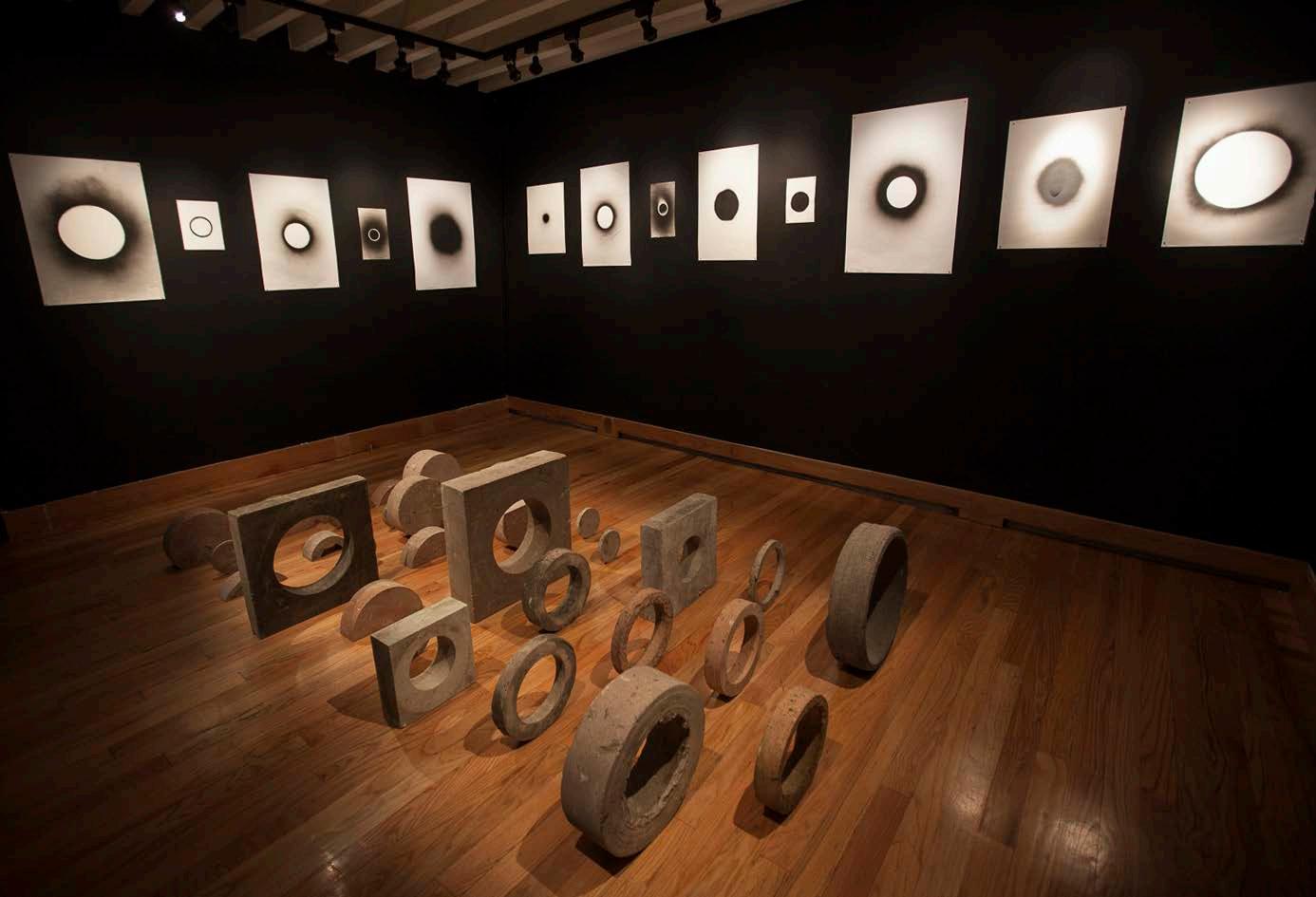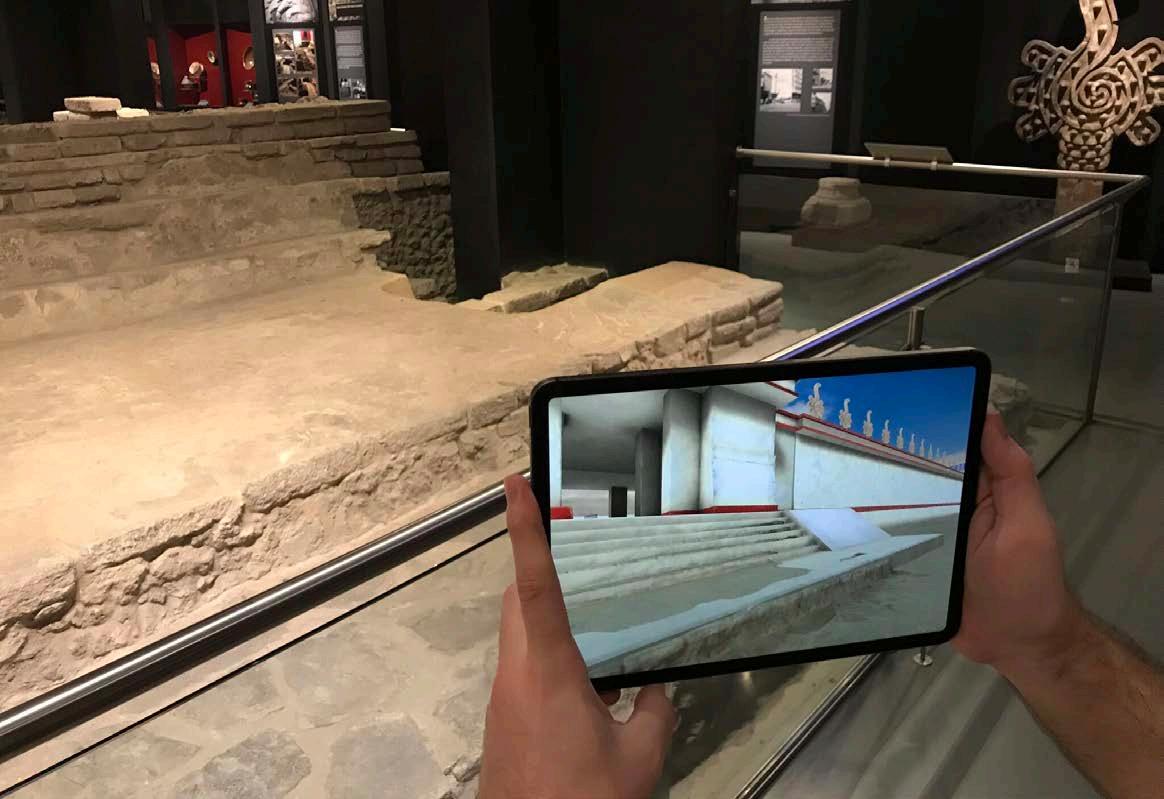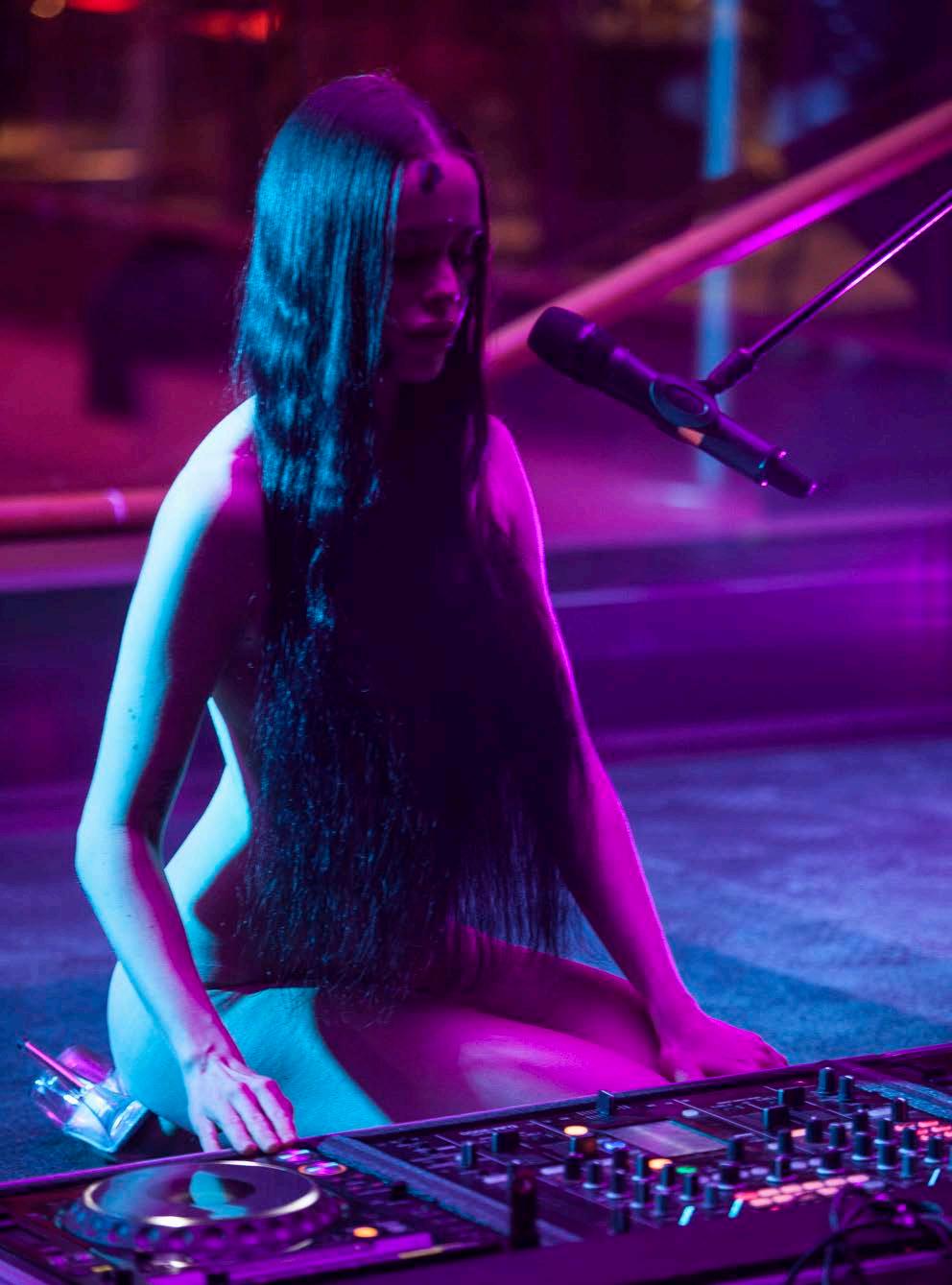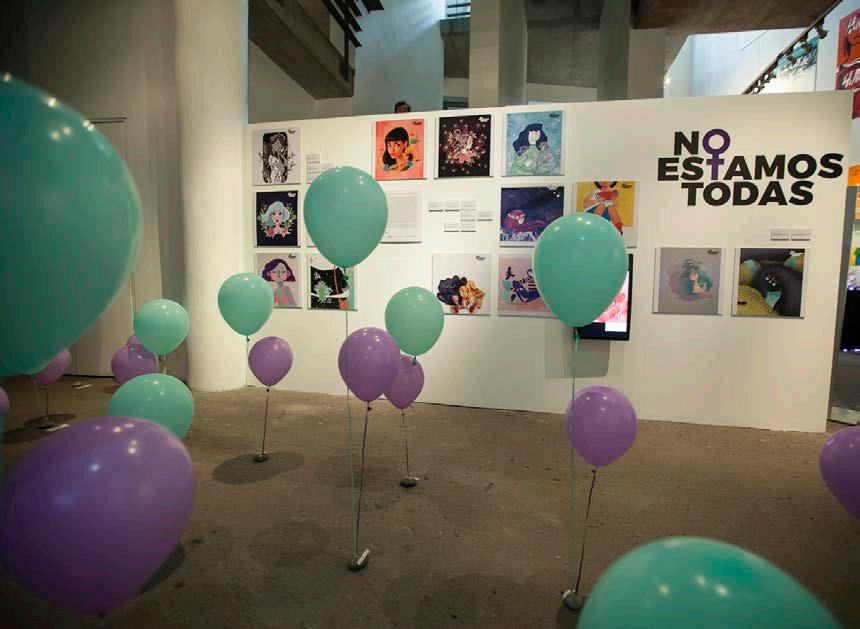
16 minute read
CCS Ciudad de México
Cultural Centre of Spain in Mexico
The Cultural Centre of Spain in Mexico (the CCSMX) is an innovative, open and inclusive multidisciplinary platform that exhibits the best of art, culture and science from Spain, in Mexico. Its programming is firmly committed to human development as a fundamental process, and it works in close collaboration with local agents. Since its creation in 2002, the Centre has provided a valuable space for cultural cooperation with public institutions, private organisations, NGOs, independent actors and civil society. This cultural space promotes diversity and creative excellence from Spain and Ibero-America and fosters values in interdisciplinary cultural practices. In the historical centre of the Mexican capital, on a site included in the UNESCO World Heritage list in 1988, the CCSMX is located just behind the Metropolitan Cathedral. The building was first constructed on a plot belonging to Hernán Cortés, who had donated it to one of his stewards. Over the years, the mansion house was used as a family residence, a convent, a small hotel, commercial premises and a wine cellar. It was finally abandoned and fell into ruin after the earthquake of 1985. In 1997, the Mexico City authorities donated the site to the government of Spain. The choice was not coincidental, but reflected a commitment made by the Spanish Agency for International Development Cooperation (AECID) to contribute to the recuperation of a historic monument, as part of the project to rehabilitate the city centre. The CCSMX finally opened its doors on 18 November 2002. The reopening of this building, at number 18 Calle Guatemala, was an event of fundamental importance to the cultural scene in Mexico City. Not only was the building completely renovated; a new cultural potential was enabled, attracting a wider public and helping establish the area as a landmark on the city’s cultural circuit. In this context, “El España” as it is known in the city, rapidly gained a reputation as a space for dialogue among the many forms of interpreting Ibero-American culture, and as an institution dedicated to fostering universal access to culture. Throughout its history, the CCSMX has been an important cultural asset in the city, acting as an agent of cooperation and development and sponsoring initiatives to raise cultural awareness and provide skills training to professionals in the field. Over 700 years of shared history infuse the walls of the building currently hosting this institution, the largest of Spain’s cultural centres abroad. Including the pre-Hispanic foundations, dating from the late fifteenth century, and the contemporary architecture produced by the 2011 renovation, the CCSMX now has over 6,000 square metres dedicated to Ibero-American culture, in the heart of the largest Spanish-speaking country in the world. Mexico has the most important and diverse cultural infrastructure in Latin America. Its cultural framework consists of major institutions, both public and private, industries in the sector, independent agents, artists and self-managed spaces. Mexico is a priority destination for the Spanish Government’s foreign cultural policies and is one of the largest and most significant overseas markets for the Spanish cultural industry. Over the past 17 years, the CCSMX has evolved in parallel with the local cultural context, maturing, becoming stronger and consolidating relations and dialogue with the different actors in the Mexican cultural sector. In the city’s cultural ecosystem, the CCSMX is recognised to be an avant-garde institution, open to all, that seeks to generate and strengthen cultural processes that directly affect the sustainable human development of the city and its inhabitants.
The institutional mission of the CCSMX is defined in accordance with the above considerations. Fulfilling its mission as a cultural centre, the CCSMX presents interdisciplinary proposals in which science, the plastic arts, the performing arts, music, literature and cinema are all interconnected, via diverse references and formats. In accordance with the demographic reality of the country, the Centre emphasises the need for young people to participate, and defends and fosters diversity. Reflecting the great importance placed by Spanish Cooperation on this important sector of the population, the CCSMX has developed its Laboratorio de Ciudadanía Digital (Digital Citizenship Laboratory, DCL). The DCL is a skills-training platform that inter-relates aspects of the arts, culture and science by means of information and communication technologies, enhancing human development and fostering a critical outlook among the citizenry. The DCL, an educational innovation based on workshops and socio-cultural activities, helps create a community that encourages learning and the acquisition of digital skills. In early 2014, the DCL began operations, providing a new instrument in the Centre’s approach to cooperation, via approaches such as the AECID Protocol for the design, creation and management of public and private alliances for development. The CCSMX has been innovative in this respect, for example in its alliance with Fundación Telefónica México, with the co-participation of Fundación Bancaria “La Caixa” and Ateneo Español de México. Over 150,000 people visit the Centre every year, forming a community of users, students and participants in a wide range of activities. These users, moreover, are playing an increasingly active role, collaborating in the definition and co-production of many contents and activities. Such is the case of CCSMX Radio, which is managed by children and teenagers, and the reading-promotion programme, conducted by pensioners and consisting of monthly reading encounters. Over 1,200 such co-produced activities take place each year, in a programme that is committed to benefiting the local environment and to promoting the cross-cutting values that underpin the AECID’s policies: defending human rights, gender equality, environmental sustainability and respect for cultural diversity. How are these ideas transferred to cultural programming in the context of Mexico City? Through trial-and-error, by knowing when to take necessary risks and by consolidating what already works well. Examples of successful ventures in this area include the Penitentiary Theatre Programme, conducted in conjunction with the Shakespeare Forum, for groups of prison inmates, enabling performance projects to recreate other, possible worlds; the long-term training programme in cultural management, imparted by professionals in this sector; the “I Want to be a Scientist” sessions for young people, aimed at fostering a vocation for science, especially among young girls; and the development of computer/internet applications for learning indigenous languages, putting into practice the political commitment of Spanish Cooperation to achieving sustainable human development via cultural projects. Taking into account the need to address all types of audiences, the CCSMX offers facilities and programmes suitable for persons with disabilities or special needs; thus, it provides information and library materials in Braille, and offers monthly activities with interpretation in sign language. It also offers training and instruction for specific needs, responding to the pedagogical and intellectual challenges that may arise in a complex environment. Creativity is a fundamental concept and instrument enabling the Centre to design solutions for the future and to contribute to achieving the 2030 Sustainable Development Goals. In the promotion of Spanish culture, the CCSMX has established programmes for the dissemination of all creative contemporary languages. Many of these programmes take place in the Centre’s headquarters, while others support the presence of Spanish talent elsewhere in the country, ensuring Spanish participation in the major forums and festivals in Mexico. Thanks to these promotional activities, Spanish culture is well represented at internationally famous events such as the International Book Fair in Guadalajara, the Cervantes Festival and the International Film Festival in Morelia, in collaboration with the Palace of Fine Arts of Mexico City and the University Museum of Contemporary Art (MUAC).
1
1. Solos (Alone), a performance presented in the CCSMX as part of the International Day of Dance 2019

The Spanish language, a shared resource, is the most important instrument fostering the cultural space our two countries have in common. The CCSMX promotes artistic creation through its activities, in which the Spanish language is the means and the message for production and knowledge. Workshops, seminars, laboratories, concerts, presentations and other formats all rely on the participation of Spanish and Mexican thinkers, writers, theorists and intellectuals. The Centre’s prioritisation of dialogue is patent in the actions taken to create a space for conversation. Many of these ideas have been put into practice in the digital library of the CCSMX, a space of co-existence and unrestricted access to knowledge. The Centre’s exhibition area offers a constantly-changing programme of exhibitions of contemporary Spanish art. Their curators have two main aims: to support the internationalisation of Spanish artists, and to present exhibitions as instruments for mediation in which artistic
2
2. Pièce distinguée n°45, inaugural performance of the exhibition Take a seat of La Ribot in 2018
3

3. Exhibition Ascensión y caída: un sacrificio (Rise and fall: a sacrifice), by Alberto Odériz part of Project 1, a Programme of individual exhibitions by Spanish artists resident in Mexico, 2019.
4. In collaboration with the INAH, the CCSMX is incorporating ICTs and augmented reality to enrich the user experience.
4

expression is a strategy for catalysing thought, through mechanisms of representation based on artistic expression. The Centre also houses the Museo de Sitio (Site Museum) displaying preHispanic Calmécac relics. This building was once part of the sacred Tenochtitlan enclosure, and later held a training centre for the leaders of Mexican society. Today it presents a textbook example of good practice in archaeological intervention and heritage protection. The dynamism in the Centre’s programmes and in its audiences is particularly noticeable in its schedule of dramatic and musical productions. Theatre, dance and performance are offered by companies from both sides of the Atlantic every month of the year in the CCSMX auditorium. This hall is called Espacio X and provides a versatile space that can accommodate all types of drama and music production. Music, an art with a unique capacity for bonding and building communities, has always played a vital role in the history of this Centre. In its initial years, the Centre’s outdoor terrace was essential to the revival of scenic arts programmes in the historic city centre. And even today, the terrace remains a major part of the Centre’s activities: from Wednesday to Saturday it provides visitors with an outstanding outdoor venue for live music, presenting a wide range of styles in a cool, hospitable environment, open for all and embodying the nature of this institution,. Making this cultural institution something that belongs to us all is the main goal of all involved at the CCSMX. An open, questioning attitude, too, is in our DNA, enriching every day and encouraging us to continue working and learning. .

6

5. CCSMX programme on gender issues and human rights 6. DJ set and performance by Forqué, aka Virgin Mary, on her first visit to Mexico in 2019
What is the purpose of a cultural centre?
Eugenio Echeverría
Director of the Border Cultural Centre of Mexico City, dedicated to sonic and visual arts, multimedia and design, and inquiring into trends related to institutionalised contemporary art.
In 2003, when I arrived in Mexico City from Barcelona to study at the Film School of the National Autonomous University of Mexico (UNAM), the cultural scene in the capital was undergoing a transformation from a self-referential model into a scenario in which creators, managers and curators engaged in a creative horizontal dialogue with international aesthetic concerns and artistic institutions. Until the 1990s, the cultural and artistic spaces of Mexico City had been shaped and nurtured by the institutional circuit and commercial galleries, seeking to avoid risk and taking familiar, safe options. At the other extreme were certain hybrid spaces and programmes, now deemed iconic, fostered by the local artistic vanguard, such as La Panadería, Temístocles and La Quiñonera, which revolutionised the ways in which art was produced, exhibited and understood in the city. The structure of these experimental, transgressive spaces, which had been so influential in the 1990s, began to weaken in the following decade, due to the economic crisis and also, perhaps, the inevitable end of an artistic-cultural era. However, with the passage of time, this collapse came to be seen as an opportunity to restructure the art scene, and reorient it towards contemporary identities, viewed as globalising or normalising according to the political stance of the beholder. By the early 2000s, when the Cultural Centre of Spain in Mexico (CCSMX) opened, the artistic, musical and cultural arena in the capital (and therefore in the country) was going through a period of transition, and required the development and consolidation of a new network of institutional, commercial and self-managed spaces.
In 2006, four years after the CCSMX was inaugurated, we opened the Border Cultural Centre, a space that I have been responsible for since then. Border began as a space dedicated to graffiti and experimental sonic art, later focusing on emergent art. We are currently becoming involved in interdisciplinary processes, from trans-feminist and anti-neoliberal positions. In my opinion, these two different models of cultural space, the public one of the CCSMX and the private one with a public vocation, represented by the Border Cultural Centre, have evolved in parallel in many ways, a logical development in view of the fact that both centres were opened to address the perceived demands of the time. During those first few years, from 2006 to 2010, it was common practice for Border and “El España” to share not only artists, curators and personnel, but even audiences and evenings. The stage for Mexican graffiti was erected with the assistance of urban designers and artists, who found in these and other spaces the ideal forum in which to share their work and to make themselves better known: thus, the creations of Dhear, Smithe, Neuzz, Saner, Mookiena, News and many others could be seen both at the Border and also at “El España”. The situation was similar for emerging artists and designers such as Jorge Alderete, Dulce Chacón, Amor Muñoz and Rita Ponce de León. It wasn’t uncommon to hear that the programme for the evening meant going first to one centre, and then to the other. Whatever their channel of presentation, many of these creators obtained the possibility to experiment and/or legitimise themselves thanks to the platforms offered by the two centres, despite their very different positions and the spectra of possibilities offered. In the early 2010s, the collaboration between institutional, commercial and self-managing spaces, on the one hand, and creators, managers, curators and the general public, on the other, intensified. It was in this context that an artistic-cultural community interacting through a network of new spaces, existing in parallel with the official framework, began to take shape. These spaces included El patio de mi casa, Vértigo, Galería Tal Cual, Fifty24mx, Yautepec, Neter Proyectos, and Bikini Wax, among many others. Most of these have since closed down or limited their activities, due to changes in the political system of the art world. In its day, this community identified itself as ‘emerging’, and this label is still valid today, after a long process of professionalisation, legitimation and economic and political resistance. The present social climate in Mexico imposes a different type of necessity on us, affecting the agendas of the cultural spaces and obliging them to respond to, or at least debate, the demands generated by the afflictions of our society. Taking approaches going far beyond those adopted ten years ago, many of the cultural spaces still nurturing the local and national cultural network are focused on applying interdisciplinary processes to alleviate the wounds inflicted by a globalised culture that is leaving progressively less margin for dissent, on body and soul. However, comfort may be drawn from the fact that dissenting projects and approaches are still being undertaken within institutional, independent or private spaces, showing that contemporary cultural productions are still being undertaken in a spirit of self-criticism. The positions, sometimes contradictory, offered both by the Border and by the CCSMX, allow them to tackle issues such as inequality, gender violence, sexuality, race and empowerment, through the lens of artistic practices. An example of such a response is the exhibition Lo que se ve no se pregunta. Identidades Trans y de género no conformista (What you can’t see, you don’t ask. Trans and non-conformist gender identities)
which I was honoured to present as co-curator, with Tania Pomar, Susana Vargas and Laos Salazar at the CCSMX in 2015. This exhibition was especially important and symbolic for me, as it was my first real, solid curating project, as well as being the first exhibition which addressed trans issues in Mexico. This project was a direct forerunner of the Jauría Trans Cultural Centre, a space managed by trans people, for trans and trans-allied persons, which has formed part of the Border Cultural Centre since 2017. Two years later, the Jauría Trans Cultural Centre remains the only active cultural space in the country to address issues crucial to the trans community. It provides accompaniment and peer-support groups, as well as artistic and cultural activities, with workshops, exhibitions and other interventions. These contributions are significant, and not just a token nod to the “T” in LGBT. Of the countries that provide statistical data in this respect, Mexico has the second largest number of murders of trans persons. Moreover, the life expectancy of a trans person in Mexico is just 35 years, in contrast to the 77 years of the cisgender population. These figures highlight the need for urgency. In addition to these facts, and from the experience of the “Lo que se ve no se pregunta… “ exhibition, the Border Cultural Centre and the CCSMX jointly undertook the design and implementation of the programme entitled Dissident Cultures, a call for research and interdisciplinary production in this field, which has been operational since 2016. This programme, an open call for projects which has received over 400 applications in its three years of existence, is aimed at generating a collective examination of the diverse manifestations of dissident culture, to serve as the basis for a sevenmonth research project, the results of which will be presented at an interdisciplinary exhibition in the CCSMX. On reviewing the trajectories of our two Cultural Centres, which at first functioned in a disconnected way, but which now work in close cooperation, with common goals, we must conclude that this is the way for institutional centres financed by public funds, to influence and be influenced by self-managing bodies. By working together and joining our forces and capacities, we can overcome each other’s shortcomings, carry out projects and foster socialartistic development within one or several specific communities. Ultimately, this kind of communal development is the driving force for any space that defines itself as a cultural centre. This approach allows us to resist policies that not only oppress the cultural sector but also non-hegemonic identities, including artistic groups, activists, sexual dissidents and the politically divergent, whose search for self-recognition is addressed by our institutions.

EQUATORIAL GUINEA Cultural Centre of Spain in Bata
Address
Paseo Lumu Matindi s/n, Bata
Opened
2001
Web
http://www.ccebata.org/










